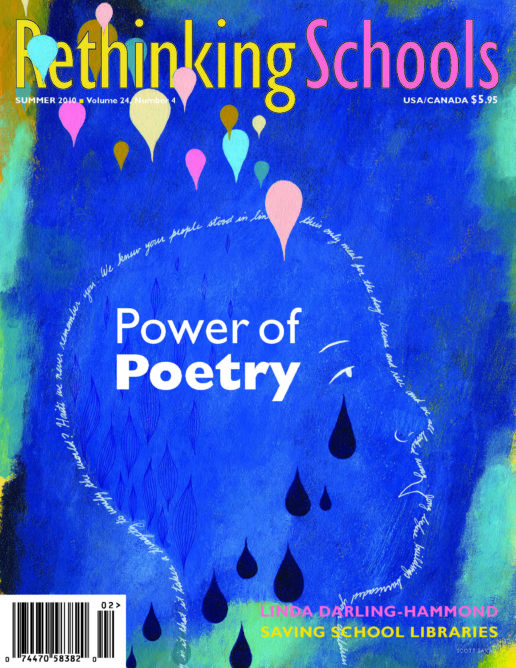New Looks at Old Problems
The History of White People
By Nell Irvin Painter
(WW Norton, 2010)
496 pp. $27.95
Making an Extraordinary School: The Work of Ordinary People
By Len Solo
(Publish America, 2010)
200 pp. $24.95
For years I have been troubled by the way struggles for racial justice are portrayed in children’s literature and school textbooks. We are given portraits of the heroines and heroes of the movement, of people who have suffered oppression and overcome it. But there is a hole in the middle of this: Where do readers encounter the racists, the white people who made it necessary to take such risks?
Now Nell Irvin Painter, professor emeritus of American history at Princeton, has published The History of White People, which removes all excuses for avoiding the concrete, historically documented examples of racist individuals and organizations that make U.S. struggles for civil rights coherent and understandable. One simply cannot fight racism without knowing about the specific manifestations of racism that made these struggles necessary.
For example, Painter, who is African American, discusses Kenneth Rogers, who I had never heard of. Rogers, who appeared on the cover of Time magazine on Nov. 25, 1940, under the headline “Angry Man’s Romance,” wrote for the Saturday Evening Post. According to Painter, in his books Rogers not only expressed hatred for blacks, but for “damned half-Negro Italians, half-Mongol Jews, and thoroughly bastardized Greeks and Levantines.” His ideas about immigrants and African Americans foreshadowed the current anti-immigrant and racist rhetoric that dominates much of the media. However, in the past the racism was even more explicit and the anti-immigrant sentiment more overt and arrogant.
Painter’s book is not full of rancor. She is very careful with her history. But the content provides information about the history of whites in the United States that is not, so far as I can tell, available in any other place. I would urge teachers who place social justice at the center of their work to read this book. I think that the study of racists belongs alongside the study of heroes and heroines. After all, to understand heroism, you need to understand the enemy.
It is a dangerous undertaking—nobody wants to talk about “bad whites”—but I believe this is a risk worth taking. As Painter says at the end of her book, “The fundamental black/white binary endures. Poverty in a dark skin endures as the opposite of whiteness, driven by an age-old social yearning to characterize the poor as permanently other and inherently inferior.”
There are people who resist racism, who provide examples of how lives can be transformed in equitable, just, and convivial ways. Len Solo’s Making an Extraordinary School is an exhilarating rush of fresh air in these days when teachers are maligned, public schools dismantled, and the creativity of young people marginalized. It is the story of the Graham and Parks Elementary School in Cambridge, Mass. Solo was principal of the school from its inception in 1974 to 2001, a great testament to the creative capacities of tenure.
With a wonderful staff, community engagement, a diverse group of students, and progressive pedagogy, this school created a learning community where even the most improbable of students achieved beyond their own imaginations. They learned to read with critical intelligence, to calculate with an understanding of the role of numbers in their lives. In addition, as Jonathan Kozol says in his foreword, “A steadfast respect for racial and ethnic diversity sets this book apart from almost every other I have read in many years. . . . A marvelous work written from the heart, by one of the great educators of our time.”
I concur. Read it and remember how wonderful public education can be. I’m sending copies to Arne Duncan.

